Detailed Info of IX-30002_14310-R44-A01 VVT PHASER & OCV
The Working Process of VVT system
In order to better explain the working process of the VVT system, the following takes the intake VVT as an example to summarize the three most basic working processes:
1. Reference position: The duty cycle of the PWM signal input to the OCV is usually 0%, and the spool does not move. The oil pressure in the oil chamber on the right side of the phaser is greater than the oil pressure in the oil chamber on the left side and the left side of the blade abuts against the stator shoulder, so that there is no relative rotation between the rotor and the stator, and the camshaft is not adjusted relative to the crankshaft timing. Usually, the intake VVT reference position is the intake valve phase lag position, that is, the intake valve lag opens and closes.
2. Working position: The duty ratio of the PWM signal input to the OCV is gradually increased, the spool moves to the farthest position, and the pressure of the left oil chamber in the phaser is gradually increased. After unlocking, when the pressure in the left oil chamber is greater than the pressure in the right oil chamber and overcomes the friction torque of the camshaft as well as the internal friction torque of the phaser, the rotor rotates clockwise relative to the stator, and the cam axial timing advances direction adjustment, that is, the intake valve will open and close in advance.
3. Stable position also called control position: After the rotor rotates clockwise relative to the stator, the duty cycle of the input OCV PWM signal is about 50%. The oil chamber on both the left and right sides of the phaser is simultaneously supplied with oil, and the rotor and stator will remain in this relative position. Usually, after VVT intervention adjustment, most of the time work at a dynamic stable position at a certain angle.



 Wheel Bearing
Wheel Bearing is a set of steel balls or rollers held together by a metal ring called a race. They help wheels spin fast with as little friction as possible. View More
Wheel Bearing
Wheel Bearing is a set of steel balls or rollers held together by a metal ring called a race. They help wheels spin fast with as little friction as possible. View More Wheel Bearing Kits
When you need to change the wheel hub bearing,you also need to replace many other parts at the same time,such as hub nut,bolt,seals,split pin,and so on. View More
Wheel Bearing Kits
When you need to change the wheel hub bearing,you also need to replace many other parts at the same time,such as hub nut,bolt,seals,split pin,and so on. View More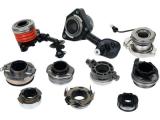 Clutch Release Bearing
Clutch Release Bearing is what presses down on the rotating spring plate or "pressure plate" to release the clutch disk. View More
Clutch Release Bearing
Clutch Release Bearing is what presses down on the rotating spring plate or "pressure plate" to release the clutch disk. View More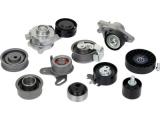 Belt Tensioner
A Drive Belt Tensioner is a pulley mounted to either a spring mechanism or to an adjustable pivot point that is used to keep constant tension on your serpentine belt. View More
Belt Tensioner
A Drive Belt Tensioner is a pulley mounted to either a spring mechanism or to an adjustable pivot point that is used to keep constant tension on your serpentine belt. View More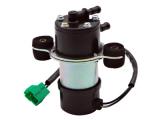 Fuel Pump
AiX provide you with the high quality of electric fuel pump and fuel pump assembly.Fuel pump assembly is one of the vital components of fuel injection system for EFI vehicle. View More
Fuel Pump
AiX provide you with the high quality of electric fuel pump and fuel pump assembly.Fuel pump assembly is one of the vital components of fuel injection system for EFI vehicle. View More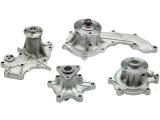 Water Pump
The reliable and effective operation of an automobile engine requires the cooperation of many parts. View More
Water Pump
The reliable and effective operation of an automobile engine requires the cooperation of many parts. View More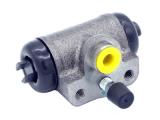 Wheel Brake Cylinder
When you want your car to slow down or stop, you need to take the brake operation. At this point, you need to step down your brake pedal. View More
Wheel Brake Cylinder
When you want your car to slow down or stop, you need to take the brake operation. At this point, you need to step down your brake pedal. View More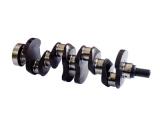 Crankshaft
Crankshaft is also known as crank.It is the important part of an engine to convert the up and down motion of the pistons into horizontal rotation.It is usually made by cast iron or forged steel. View More
Crankshaft
Crankshaft is also known as crank.It is the important part of an engine to convert the up and down motion of the pistons into horizontal rotation.It is usually made by cast iron or forged steel. View More VVT PHASER & OCV
VVT is the abbreviation of Variable Valve Timing. VVT PHASER is the vital component for the VVT engines. View More
VVT PHASER & OCV
VVT is the abbreviation of Variable Valve Timing. VVT PHASER is the vital component for the VVT engines. View More







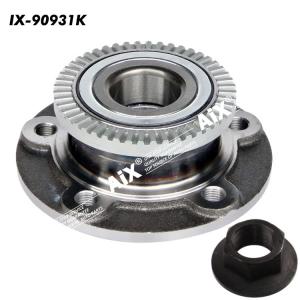



 +86-18758057736
+86-18758057736 
 TEAM 21,XIEJIA VILLAGE, PUYANG TOWN, XIAOSHAN DISTRICT, Hangzhou, Zhejiang Province, China
TEAM 21,XIEJIA VILLAGE, PUYANG TOWN, XIAOSHAN DISTRICT, Hangzhou, Zhejiang Province, China 